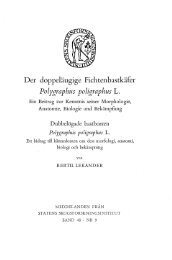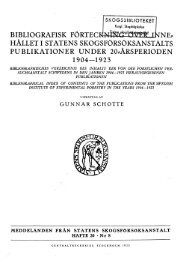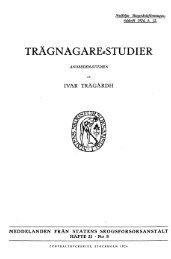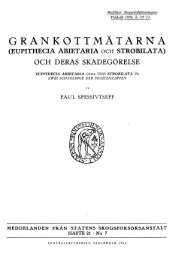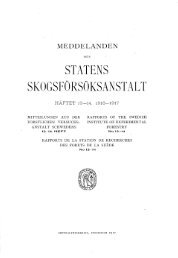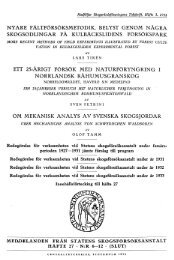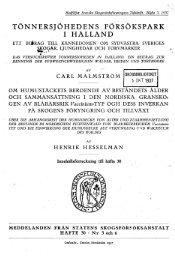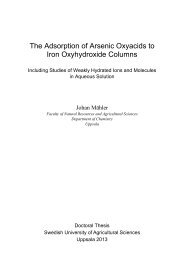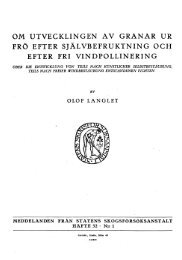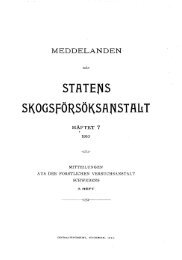SVERIGES LANTBRUKSUNIVERSITET - Epsilon Open Archive - SLU
SVERIGES LANTBRUKSUNIVERSITET - Epsilon Open Archive - SLU
SVERIGES LANTBRUKSUNIVERSITET - Epsilon Open Archive - SLU
Create successful ePaper yourself
Turn your PDF publications into a flip-book with our unique Google optimized e-Paper software.
66<br />
Routine determination of AET, in a long term, is feasible only<br />
with reliable and weather proof monitoring equipment that require<br />
minimum of attendance and maintenance at the site. Automated weather<br />
stations equipped with appropriate sensors could be used for this<br />
purpose. These autostations should also be located on a relatively<br />
homogeneous terrain, for example, on an relatively extensive<br />
agriculturaI field. One approach to estimate AET is to apply the<br />
measurement of the skin surface temperature of the evaporating surface<br />
in addition to the standard meteorological data.<br />
2. Theory<br />
2.1. The aerodynamic surface temperature method<br />
To obtain a working formula for AET we first consider the heat<br />
balance of the soil surface. The surface either absorbs or emits a net<br />
amount (R n ) of electromagnetic energy. When absorbed this energy is<br />
converted into heat. The absorbed heat is further conducted into the<br />
soil as soil heat flux (G) and transported into the air as sensible<br />
(H) and latent (LE) heat. A small amount of heat can temporarily be<br />
stored in the vegetation layer, but for most agriculturaI crops this<br />
component can be neglected. For practical purposes the heat balance<br />
can then be written as<br />
G + H + LE (1)<br />
The efficiency of the transport of sensible and latent heat may be<br />
characterised with a single parameter, namely the turbulence transfer<br />
coefficient (h), which is used to connect the flux of an entity to the<br />
vertical concentration gradient within a vertical distance z of that<br />
entity. For the sensible heat flux we have<br />
where pCp is the thermal heat capacity of air, To is the skin surface<br />
temperature and Tz is temperature at height z (usually the screen<br />
height 2m) above the ground.<br />
The transfer coefficient hHz for heat between the effective canopy<br />
height and height z is mainly dependent on the stability of air,<br />
height of the roughness elements and wind speed. Empirical algorithms<br />
(2)





